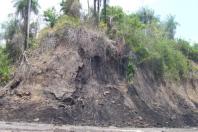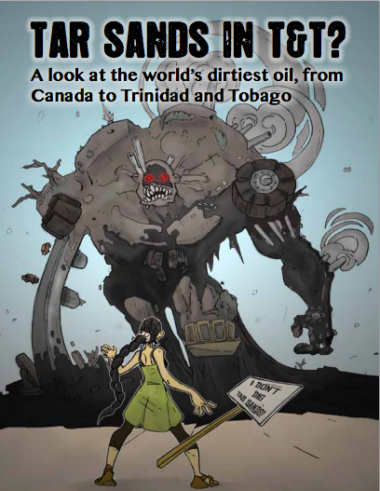Trinidad & Tobago
The plot:
If one measures the existence of the industry as beginning with exploration, then Trinidad & Tobago has the oldest oil and gas industry on planet. The overwhelming bulk of on land oil reserves have been depleted, and re-exploring and opening up old wells is the current strategy for a country dependent on oil and gas. Also in the future vision of energy producers are bitumen reserves that vastly outstretch remaining conventional on and offshore oil. Interntional discussion and advertising for bitumen developers has been undertaken by various T&T governments, yet no public discussions have been held at home.
The bulk of bitumen reserves in T&T currently identified have homes built on top of them currently at a depth of outcropping bitumen on the surface.
The details:
Most tar sands are too shallow for In-Situ; Mining required for vast majority of tar sands.
Exploration and feasibility studies conducted throughout 2000's by Petrotrin and Western Oil Sands of Canada. Currently Petrotrin has exploration for development permit. Multiple projects undertaken or planned that facilitate tar sands bitumen extraction (Reliance Energy of India constructing a bitumen upgrader, refinery expanded to include bitumen refining, desalination plant in planning stages, etc).
Highway section between Mon Desir and Debe possibly linking upgrader (proposed in 2011 for Union Estate) and refinery (Point-A-Pierre). Number one financier of tar sands extraction on the planet (Royal Bank of Canada) bought out the Royal Bank of Trinidad & Tobago.
Petrotrin has development permits and is advertising for a foreign partner to join tar sands venture and license will be granted “outside the competitive bidding process.”
Petrotrin estimates goals of 30 to 40 000 bpd.
The Southwest Peninsula is densely populated; to develop the bitumen in place near where the “oil sands quarries” are would necessitate either toxic excavation up to the property line of countless properties or mass expulsion and resettlement of near entire villages. Food production from fruit trees to livestock immediately threatened. T&T is a small territory and the locale of any major tailings pond is unclear. One of the previously defeated smelters was stopped in the exact same location as the proposed bitumen upgrader on the Union Estate. Even at maximum production levels, cannot reverse terminal decline in reliance on oil and gas revenue for the nation-state.
Canada has been touted as a model for the development of T&T's tar sands deposits. Calling it a “new tar sands frontier,” both PM Kamla Persad-Bissessar and Minister of Energy Kevin Ramnarine advertised T&T to Canada during the FTAA talks at Cartagena, Colombia in the Spring of 2012. T&T lost dominance in oil delivery to the Caribbean after Venezuela and PDVSA orchestrated PetroCaribé. PetroCaribé has since delivered cheap, no interest crude supplies to participating Caribbean countries-- allowing the smaller countries to develop but denying a captive market for Petrotrin and the National Gas Company of Trinidad & Tobago.
Today, T&T delivers the bulk of their crude oil directly to the United States.
| Attachment | Size |
|---|---|
| tarsands_trini_report_web.pdf | 4.72 MB |



